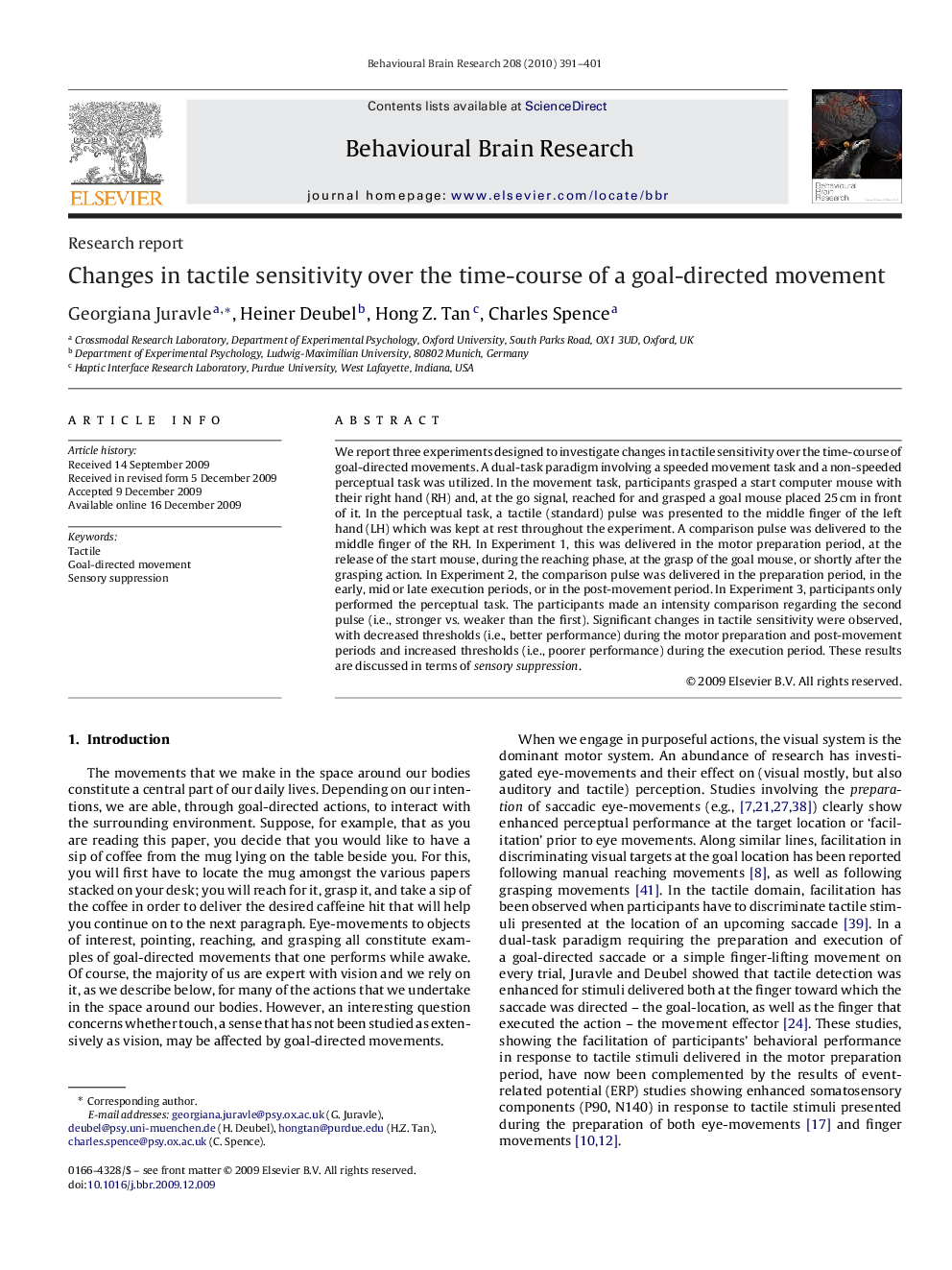| Article ID | Journal | Published Year | Pages | File Type |
|---|---|---|---|---|
| 4314359 | Behavioural Brain Research | 2010 | 11 Pages |
We report three experiments designed to investigate changes in tactile sensitivity over the time-course of goal-directed movements. A dual-task paradigm involving a speeded movement task and a non-speeded perceptual task was utilized. In the movement task, participants grasped a start computer mouse with their right hand (RH) and, at the go signal, reached for and grasped a goal mouse placed 25 cm in front of it. In the perceptual task, a tactile (standard) pulse was presented to the middle finger of the left hand (LH) which was kept at rest throughout the experiment. A comparison pulse was delivered to the middle finger of the RH. In Experiment 1, this was delivered in the motor preparation period, at the release of the start mouse, during the reaching phase, at the grasp of the goal mouse, or shortly after the grasping action. In Experiment 2, the comparison pulse was delivered in the preparation period, in the early, mid or late execution periods, or in the post-movement period. In Experiment 3, participants only performed the perceptual task. The participants made an intensity comparison regarding the second pulse (i.e., stronger vs. weaker than the first). Significant changes in tactile sensitivity were observed, with decreased thresholds (i.e., better performance) during the motor preparation and post-movement periods and increased thresholds (i.e., poorer performance) during the execution period. These results are discussed in terms of sensory suppression.
